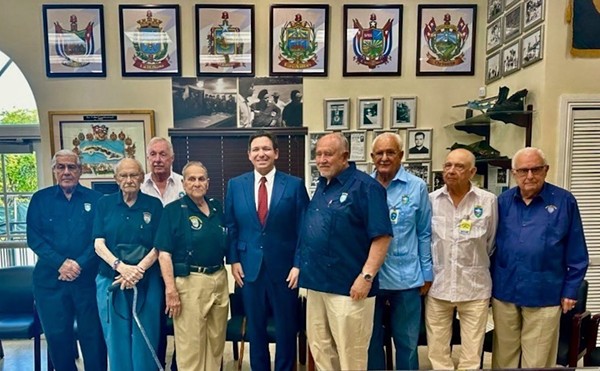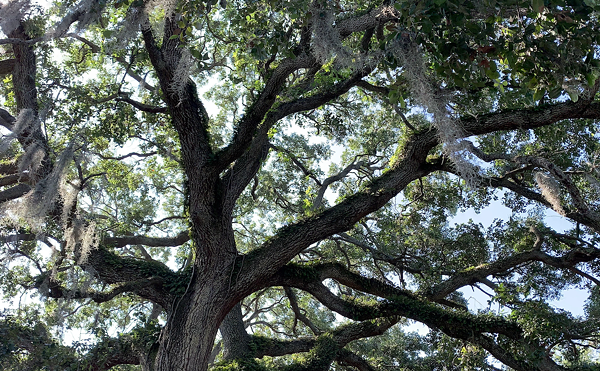Heirs to secret sangria recipes In Tampa Bay, some of the most precious secrets aren't kept at MacDill Air Force Base, but in the families of Latin restaurateurs. These secrets are handed down through the generations and concern the exact composition of a jewel-tone, garnet mix of wine and fruit known as sangria, from the Spanish word for blood — sangre.
Pipo's sangria, created by Raymond Hernandez, is the very blood of the Hernandez family's distinct and historical line that reaches through Cuba back to Spain, where sangria originated. The Greeks, whose ancient wine iconography we're quite familiar with, felt that serving wine straight was uncivilized and mixed theirs with many things, including seawater. Today, Hernandez's grandson, Danny Hernandez, owns the Davis Islands Pipo's and keeps the family recipe secret, though he does say it has seven ingredients — and seawater is not among them. Verging on a dark claret, the tones of Pipo's Sangria is the stuff of which vigorous celebrations — as well as hangovers — are made. Piquant, it makes "no" a hardsell to the soul.
The sangria at Capdeville's at La Teresita also has seven similar secret ingredients but is a far different drink from that at Pipo's.
Frothy and coral in tone, it costs half as much and delivers half the kick, but speaks a sweet and fruity language distinctly its own.
"My dad prepared it to his liking," Luis Capdeville says of the nearly 30-year-old recipe. It represents the strong character of the family that has made La Teresita a Boliche Boulevard legend. His father, Max Capdeville, came to the States from Cuba in 1962.
Sangria is usually made of red wine, but can be made of white wine as well. It can include any number of fruits, from basic lime wedges to dramatic concoctions mimicking a Carmen Miranda hat. Sugar is generally added, along with wattage-adding liquors such as brandy, rum or triple sec. Then, the mixture steeps anywhere from three hours to a week to develop its personality.
The art of Sangria has many permutations. It remains a live, liquid art. The imagination is the limit.
"It is very hip in Barcelona," says Richard Gonzmart of The Columbia Restaurant. He's always looking for the latest sangria recipe on his trips to Spain. His father, Cesar Gonzmart, contributed the basic red and white sangria to the Columbia's menu in the 1950s, but the bartender let it slip that the basic red house sangria is now made from a powdered mix to insure that each Columbia serves the same glass of sangria. The result is an aftertaste of SweetTarts. The better flavor is in the racier new Sangria de Cava made tableside. Richard sent members of his staff to Spain to learn how to make it.
On South Tampa's Howard Avenue, the elixir gets a metaphorical bikini wax and makeover for the thongs-peeking-over-low-slung-jeans-set at Sangria's.
Like The Columbia Restaurant, Sangria's serves its concoction in brightly painted Spanish clay pitchers for $23 a pop. In a semi-dark room painted in sweet butter yellow, the atmosphere is as refreshing as the drink.
Sangria's co-owner, Mexican-born Victor Perez, uses his mother's recipe, devoting his best wine to the libation. "Good wine makes the quality of the sangria," he says. As to revealing the ingredients, he says, "I'm not going to tell you that, but I kept it authentic." The fine-wine-insistent red drink is sweet, whispering family holiday rather than libidinous abandon.
Valencia Gardens owner David Agliano uses the same 75-year-old recipe his grandfather, founder of Valencia Gardens, Manuel Agliano, taught him years ago. He learned to make the brew by feel and sight, rather than by measuring ingredients.
Today, he still makes his best sangria at home, using his grandfather's simple pitcher-at-a-time recipe, spreading the sugar just so across the bottom of the pitcher.
At his restaurant, the sweet, fruity, deep red sangria evokes the sort of blood fever that makes it seem entirely possible to dance down one of the lanes in the atmospheric wall paintings by Harry Bierce. At $14.50 a carafe, it is an affordable trip.
Madelin Gonzalez and her husband bought Blanco's Restaurant eight years ago. It's still a neighborhood place to meet and talk, where a thick Cuban sandwich can still be purchased for $3. With the purchase of the building and business came the Blanco's sangria recipe. Gonzalez doesn't know its history, but it's served chilled without ice and is a perfect synthesis of price, product and poetry. Aromatic and subtle, it's a spontaneous samba in a glass. At $1.95 a generous glass or $7.95 a pitcher, it's my favorite and one of the best deals in town.
While most sangria recipes rest on simple ingredients, the end result of each has its own character. There is no best sangria. Each is a liquid quilt, a plethora of individual parts, the understanding of tradition and a grand undertaking of individual passion.
RhondaK is a poet and urban explorer. Intrepidly, she tried all sangrias in this column — in quantity.
Pipo's Latin Café: 238 E. Davis Blvd., Tampa, 258-8100.
Capdeville's at La Teresita: 3246 Columbus Drive W., Tampa, 813-879-9704.
Sangria's: 315 S. Howard Ave., Tampa, 813-258-0393.
Valencia Gardens: 811 W. Kennedy Blvd., Tampa, 813-253-3773.
The Columbia Restaurant: E. Seventh Avenue and 21st Street, Ybor City, 813-248-4961.
Blanco's Restaurant: 3229 W. Cypress St., Tampa, 813-876-7375.

















